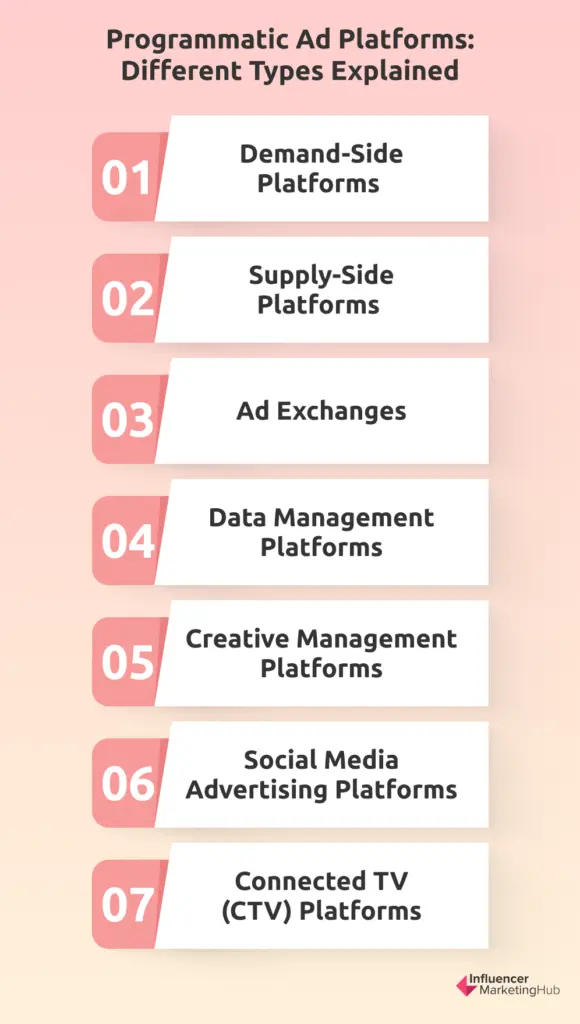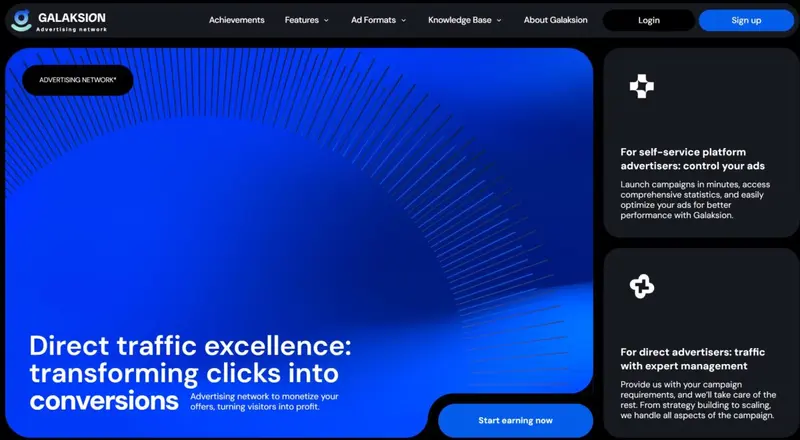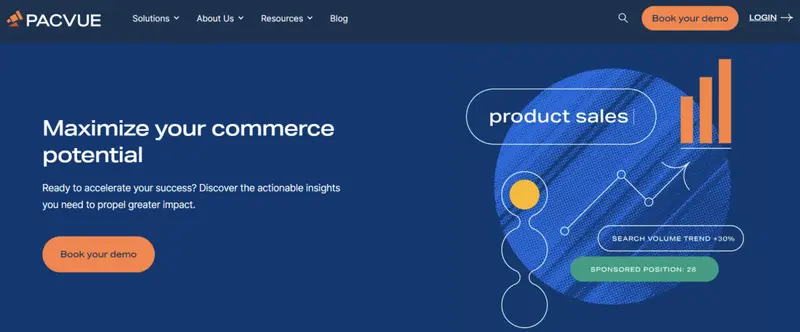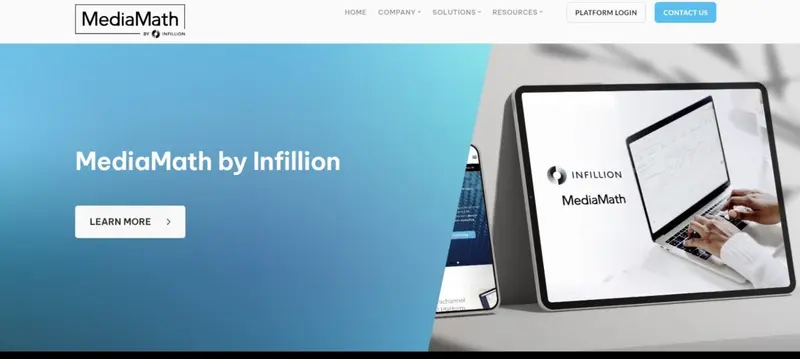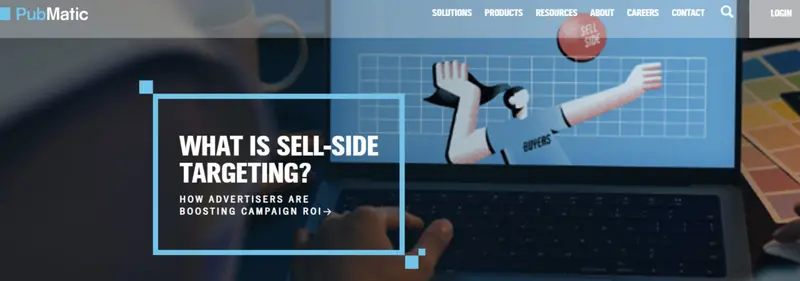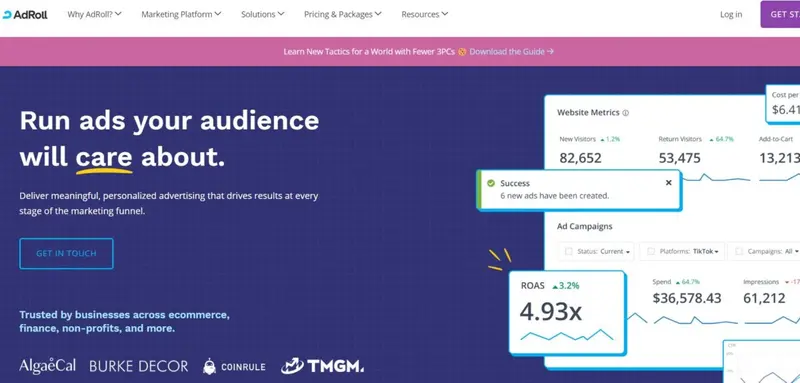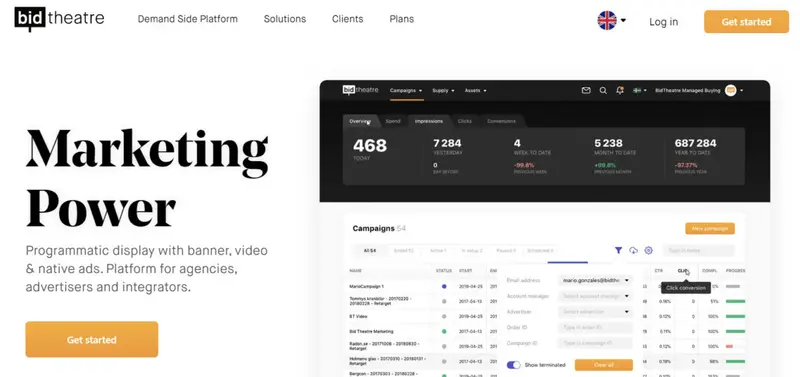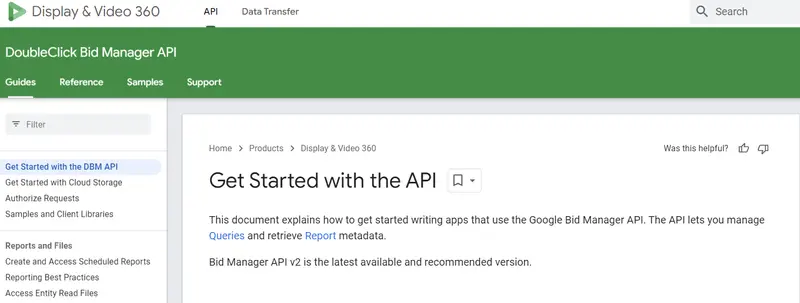Programmatic advertising has transformed the way businesses reach and engage with their target audience in today's digital landscape. It refers to the use of automated technology, such as algorithms and machine learning, to buy and sell advertising space in real-time. Programmatic ad platforms are at the heart of this process, enabling advertisers to deliver highly targeted and personalized ads to consumers with greater efficiency and precision than traditional advertising methods.
The rise of programmatic advertising can be attributed to its ability to leverage data and technology to deliver more relevant and engaging ads to consumers, resulting in higher click-through rates and better ROI for businesses.
Programmatic advertising has also opened up new opportunities for businesses to reach their target audience across a variety of channels, including social media, video streaming services, and mobile apps. This has led to increased competition among programmatic ad platforms, with new players entering the market and established platforms constantly evolving their technology to stay ahead of the curve.
As the advertising industry continues to shift towards automation and data-driven decision-making, programmatic advertising is poised to play an increasingly important role in the future of advertising.
What Are the Benefits of Programmatic Advertising Platform?
Programmatic ad platforms utilize real-time bidding (RTB) technology, which allows advertisers to bid on ad inventory in real-time. When a user visits a website, the programmatic ad platform will evaluate the user's profile and bid on the available ad inventory based on the user's demographics, browsing behavior, and other relevant data points. The platform will then serve the winning ad to the user in real-time, ensuring that the ad is highly relevant and personalized.
Programmatic ad platforms also utilize data-driven algorithms to optimize ad delivery and maximize advertising ROI. These algorithms use machine learning and artificial intelligence to analyze large volumes of data and make predictions about which ad creative and targeting options will be most effective for a given audience.
These solutions also offer robust data and analytics capabilities that allow advertisers to track and measure the performance of their advertising campaigns in real-time. This includes metrics such as click-through rates, conversion rates, and cost per acquisition. By analyzing this data, advertisers can optimize their campaigns and make data-driven decisions about how to allocate their advertising budget for maximum impact.
With automated and data-driven approach to managing advertising campaigns, a programmatic advertising platform can significantly increase the efficiency and effectiveness of advertising for large businesses and enterprises.
Types of programmatic ad platforms
There are different types of programmatic ad platforms available that allow advertisers to automate the buying and selling of ad inventory through real-time bidding (RTB) and other automated processes. Here are some of the main types of programmatic ad platforms:
Demand-Side Platforms (DSPs): These platforms are used by advertisers and agencies to purchase ad inventory across multiple ad exchanges and supply-side platforms (SSPs) through real-time bidding. DSPs provide advanced targeting capabilities and optimization features to help advertisers achieve their campaign goals.
Supply-Side Platforms (SSPs): These platforms are used by publishers to sell ad inventory across multiple ad exchanges and demand-side platforms. SSPs provide tools to help publishers manage and optimize their ad inventory and maximize revenue.
Ad Exchanges: These platforms provide a marketplace where advertisers and publishers can buy and sell ad inventory through real-time bidding. Ad exchanges offer access to a large pool of ad inventory from multiple publishers and allow for efficient, data-driven ad buying and selling.
Data Management Platforms (DMPs): These platforms collect and analyze data from multiple sources, including first-party and third-party data, to help advertisers and agencies better target their ads and optimize their campaigns.
Creative Management Platforms (CMPs): These platforms provide tools for designing and optimizing ad creatives, including display ads, video ads, and native ads.
Social Media Advertising Platforms: These platforms allow advertisers to create and run ads on social media platforms, such as Facebook, Instagram, Twitter, and LinkedIn, through programmatic buying.
Connected TV (CTV) Platforms: These platforms enable programmatic buying of ads on connected TV devices, such as smart TVs, Roku, Apple TV, and Amazon Fire TV.
These are some of the main types of programmatic ad platforms available, and each type offers different features and capabilities to help advertisers and publishers achieve their advertising goals.
Galaksion is a performance-focused advertising network that combines a self-serve platform with a managed option for advertisers who want hands-on execution. On the self-serve side, it’s built for fast launches and iterative optimization: you can spin up campaigns quickly, monitor real-time stats (including clicks, impressions, CTR, and ROI), and analyze performance by device and GEO. It also supports third-party tracking tools like Voluum, Binom, and RedTrack, which is useful if you’re running offers through an external tracker and want cleaner attribution workflows. Where Galaksion stands out in a “programmatic alternatives” list is its heavy emphasis on direct-sourced traffic and quality controls. The platform positions its inventory as coming directly from website owners, and it pairs that with an antifraud layer designed to filter malicious activity and enforce partner standards (including the claim that it does not resell traffic from other networks). Format coverage is oriented toward common performance buying patterns—Popunder, Native, Push, On-Page Notifications, Mobile Push-Up, and Interstitial—so it can support both aggressive testing and broader scaling depending on the funnel and vertical. Several formats list CPC/CPM/CPA options, and the platform promotes testing mechanics such as trying multiple creatives within a single campaign. For teams that value guided execution, the availability of 24/7 personal manager support (including optimization input and creative/pre-lander help) is a meaningful operational differentiator—especially at smaller spend levels. Pacvue offers a suite of analytics, sales, and intelligence tools that businesses can leverage to uncover new opportunities and take meaningful action in real-time. One of the key features of Pacvue is its ability to synthesize operations, retail media, and category insights into a single, state-of-the-art platform. This integrated solution enables businesses to prioritize the most impactful opportunities for every product, marketplace, and category, ensuring they achieve maximum impact with every campaign. With Pacvue, businesses can also automate their campaigns for every marketplace, driving sales and growing their market share. The platform provides tailored recommendations based on analytics, enabling businesses to discover new possibilities for their vision and take the necessary actions to achieve their goals. The platform also offers streamlined operations and cost-reduction features, enabling businesses to improve their operations and drive holistic business growth. The platform enables businesses to streamline daily tasks, reducing costs and improving efficiency, giving them the resources they need to grow their business. One of the most significant advantages of using Pacvue is its global reach, with access online marketplaces worldwide, including Amazon, Walmart, Target, Kroger, and more. This broad reach enables businesses to get in front of their customers where they already shop, increasing their chances of making a sale and driving business growth. The ads platform has received rave reviews from businesses worldwide, with many praising its ability to manage different ad types within one tech platform, enabling businesses to make adjustments much faster than they were previously able to do manually. Others have highlighted the platform’s ability to keep their team’s spend efficient and one step ahead of the competition, helping them work more efficiently and outperform their competitors. Adobe Advertising Cloud offers a range of software products to help businesses deliver better ads to every audience across all digital media channels. One of the key features of Adobe Advertising Cloud is its demand-side platform, which allows businesses to manage all their digital media strategies in one place. This platform streamlines the process of creating and delivering ad campaigns across multiple channels, including display, video, mobile, and social media. This makes it easier for businesses to target their audience with relevant ads and achieve better results. Another product offered by Adobe Advertising Cloud is its search marketing management tool. This tool uses artificial intelligence and data integrations to help businesses make better decisions about their search marketing strategy. By analyzing data on consumer behavior and search trends, businesses can optimize their campaigns and get better results from their search marketing efforts. Adobe Advertising Cloud also offers a creative management tool that allows businesses to streamline the creation of meaningful ad experiences. This tool helps businesses to create compelling and engaging ad content that resonates with their audience. One of the strengths of Adobe Advertising Cloud is its integration with other Adobe products, such as Adobe Analytics and Adobe Experience Manager. This integration allows businesses to use data from their analytics platform to inform their advertising campaigns and create a more personalized experience for their customers. MediaMath is a top ad tech company that offers a Demand Side Platform (DSP) for programmatic advertising. They have over 500 employees worldwide and serve one-third of the Fortune 500 companies. MediaMath’s DSP uses Brain, a proprietary AI technology that predicts ad impression performance and optimal bid prices. Brain is split into two parts: The Left Brain analyzes historical data, and the Right Brain predicts the best price for an impression. In 2019, MediaMath launched SOURCE, a solution to address the challenges of addressability, accountability, and alignment in a world without 3P cookies. MediaMath’s DSP provides a comprehensive suite of features related to programmatic advertising, including AI-powered bidding, multi-channel targeting, audience segmentation, and flexible identity core. The company’s SOURCE ecosystem helps advertisers get access to genuine impressions on real media properties as well as an addressable and engaged consumer base, which boosts cost efficiency by cutting down on media and fraud protection fees. This powerful programmatic advertising platform provides comprehensive solutions to brands and agencies looking to reach and influence their target customers across all screens. PubMatic is a leading programmatic ad platform that offers a full advertising technology stack built upon its core SSP offering. With purpose-built programmatic tools for publishers and buyers, PubMatic enables clients to optimize their performance their way. One of PubMatic’s standout features is its SSP for publishers. The PubMatic SSP brings together technical innovation, unique demand, and sophisticated analytics to ensure publishers control their revenue opportunities and user experience across a variety of channels and formats, including CTV, online video, mobile app, web, and beyond. For buyers, the PubMatic SSP provides premium inventory, next-gen addressability, and transparency, enabling them to drive ROI across the same channels and formats. PubMatic’s Connect product is another noteworthy feature. Connect offers publishers future-proofed revenue opportunities while maintaining the highest level of security and respect for user privacy. This product combines platform technology and dedicated service to enhance how inventory and data are packaged and transacted. For buyers, Connect provides efficient, ROI-driven data targeting on the sell side, putting them ahead of the competition today and tomorrow. Another notable feature of PubMatic is its Identity Hub, which centralizes, implements, tests, and optimizes alternative identity approaches for scale and performance. This leading ID management tool for publishers leverages proprietary technology to simplify the complex alternative identifier marketplace. OpenWrap OTT centralizes 100% of direct and programmatic demand and increases yield with Prebid-powered bidding applied holistically to ad pod creation. Additionally, OpenWrap SDK is an in-app header bidding technology built from the ground up to support Prebid, connecting to multiple cloud demand partners to improve app performance and increase competition for inventory. AdRoll allows marketers to target and retarget users on various websites, apps, Facebook, Instagram, and through emails. It is a self-service platform that can be operated by marketers to reach their target audience and analyze cross-platform results. One of AdRoll’s top features is its full-service DSP, which enables marketers to carry out comprehensive display ad campaigns on millions of websites, apps, and digital assets available through computers, mobile devices, and TVs. The platform assigns a customer success manager to each customer, allowing marketers to focus on strategizing for the bigger picture. Various data layers can be applied to ads, enabling users to target potential customers by search behavior, geo-locations, time of day, and other variables. Another important feature is the ability to create static and dynamic web display, native and video ads, and Facebook and Instagram image and video ads for computers and mobile devices. AdRoll also offers attribution variables to attribute conversions to campaign types, allowing marketers to understand which campaigns are delivering the best results. Lastly, AdRoll provides marketers with basic training to set up ads on the platform. Even though the platform is easy to use, proper training is necessary to take full advantage of all its features. Marketers can create, manage, and analyze campaigns in-house and must regularly optimize campaigns to deliver desired results. BidTheatre enables agencies, advertisers, and integrators to deliver messages across the marketing funnel. The platform offers precision advertising for local, national, and global publishers without the hassle of dealing with multiple supply relations. BidTheatre leverages data assets to find and attract target audiences in real-time using multiple ad formats across desktop, mobile, and tablet devices. The platform provides a range of services to support effective workflows for ad ops teams. It offers flexible invoicing and specification options and allows third-party dashboard integrations. BidTheatre’s DSP is built with agencies in mind and offers features to help them stand out. It is also an attractive solution for advertisers looking to take programmatic advertising in-house and not only for programmatic advertising agencies, providing basic/advanced workflows that are easy to use, even for beginners. BidTheatre helps publishers discover how a header bidding setup can replace a traditional waterfall setup, extending inventory and product offerings, improving monetization, and simplifying workflow and operations. Integrators can add powerful and scalable media buying capabilities to their own software by integrating with the BidTheatre API. Access to the ad spaces of millions of digital websites in open and private marketplaces is another quality of BidTheatre. It supports multiple ad formats, including banner, video, and native ads, and enables advertisers to engage customers across multiple channels and devices. BidTheatre is data-driven and allows advertisers to activate their data assets, gain transparency and insights, and leverage data to fuel customer dialogue. It takes inventory quality, user privacy, and brand safety seriously, working with partners to detect malicious tags, block non-human traffic, and filter low-quality users. DV360, formerly known as DoubleClick Bid Manager, is an enterprise-level programmatic advertising solution for media buying. It is a part of the Google stack for Marketing and integrates with Studio, Campaign Manager, and Google Analytics. DV360 provides a range of features related to programmatic advertising. One of the key strengths of DV360 is its targeting capabilities. The platform allows brands to leverage first-party data, Google’s rich audience data, and third-party user lists to target potential customers. The targeting options include demographic, income, and geo-targeting, as well as targeting users who expressed purchase intent by recently searching for competitor brands. DV360 also offers personalized messaging based on the user’s important life events. DV360 has a large selection of inventory, offering access to a wide range of sites through several ad exchanges. Advertisers can create private deals with individual publishers to get priority access to their impressions before the general auction. They can also upgrade their deal to Programmatic Guaranteed to reserve premium inventory. DV360 provides granular control over brand safety through built-in category exclusions and viewability settings. Third-party verification providers are also available in the UI at an extra cost. The platform delivers faster, smarter marketing by supplying media buyers with tools and reporting needed for successful campaign optimization. Bidding in DV360 is highly customizable, and advertisers can use fixed CPM bidding, automated bidding strategies, and bid multipliers. DV360 also allows setting up custom bidding to favor one conversion over others. The platform provides a high level of transparency on performance, enabling media buyers to analyze it from different angles. The Trade Desk provides advertisers with a range of features to help them achieve growth, reach new audiences, and prove their impact. With over a decade of innovation behind them, The Trade Desk offers a single platform that breaks down silos and provides all the tools advertisers need to plan, buy, optimize, and measure campaigns. One of the key features of The Trade Desk is its ability to help advertisers reach new audiences everywhere. With the platform, advertisers can reach more of their ideal customers wherever they are, thanks to its direct access to premium publisher inventory. This direct connection to inventory from leading premium publishers ensures that advertisers have a more objective view of where their media dollars are going. Another notable feature of The Trade Desk is its commitment to identity solutions. The platform offers cutting-edge solutions like Unified ID 2.0 (UID2) and European Unified ID, which provide a better foundation for identity and help the industry solve the challenges facing the future of the open internet. The Trade Desk is pioneering these solutions to guide the industry toward a more future-proof approach to identity. The Trade Desk also helps advertisers meet their audience where they are, with more precision across every channel and device, including Connected TV. Advertisers can put their linear and digital data to work, extending their reach to cord-cutters and cord-nevers alike. With the platform, advertisers can connect their campaigns to real-world results through a powerful measurement marketplace that helps them close the loop between online ads and in-store sales like never before. Amobee’s strength lies in its ability to drive better results through better data, while ensuring privacy. Amobee also provides a unified workflow with connected and collaborative planning, buying, and analytics tools that streamline workflow processes and drive incremental performance. The eye-catching feature of Amobee is its proprietary intelligence that enables brands and agencies to power big ideas. The platform also offers the ability to orchestrate the entire customer journey, execute campaigns across all screens, combine precision with performance to optimize campaigns, and make better decisions through data-driven analysis. Amobee’s programmatic capabilities are comprehensive and include cross-channel targeting, real-time bidding, audience segmentation, and measurement and analytics. The platform’s ability to consolidate TV, CTV, digital, and social execution provides marketers with a one-stop-shop to reach their target audience across multiple channels. Another noteworthy feature of Amobee is its commitment to privacy. The platform enables brands and agencies to future-proof their customer engagement strategy by harnessing data in a privacy-safe way. This is especially important given the increasing importance of data privacy regulations such as GDPR and CCPA.1. Galaksion
2. Pacvue Commerce
Standout features:
3. Adobe Advertising Cloud
Standout features:
4. MediaMath
Standout features:
5. PubMatic
Standout features:
6. AdRoll
Standout features:
7. BidTheatre
Standout features:
8. DV 360
Standout features:
9. The Trade Desk
Standout features:
10. Amobee
Standout features:
Frequently Asked Questions
What is a programmatic advertising platform?
A programmatic advertising platform is a technology platform that automates the buying, selling, and optimization of digital advertising inventory in real-time using artificial intelligence, data, and algorithms. It connects advertisers with publishers across multiple ad networks, exchanges, and supply-side platforms.
How does programmatic advertising work?
Programmatic advertising platforms use data to automate the ad buying and selling process. Advertisers can set their targeting criteria such as demographics, geographic location, interests, and behavior. The platform then uses machine learning and algorithms to analyze this data and match it with available ad inventory, ultimately serving the most relevant ad to the right user at the right time.
What are the benefits of programmatic advertising platforms?
Programmatic advertising platforms offer several benefits, including real-time bidding, enhanced targeting and personalization, cost-effective advertising, increased efficiency and automation, and improved ad performance through better data analysis and optimization.
What types of ad formats can be run on programmatic advertising platforms?
Programmatic advertising platforms support a wide range of ad formats including display, video, native, social, and mobile. These platforms also support different pricing models such as cost-per-thousand impressions (CPM), cost-per-click (CPC), cost-per-acquisition (CPA), and viewability-based pricing.

